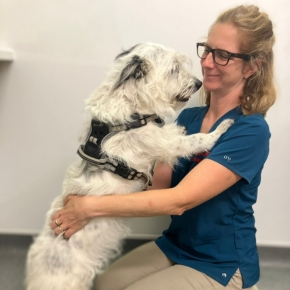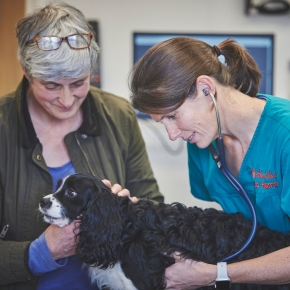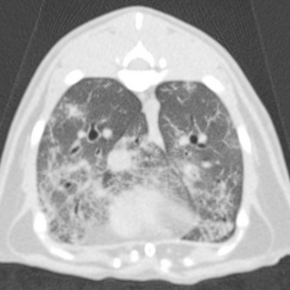
The coughing dog with heart disease – important considerations
Read about a case that illustrates perfectly the importance of not missing hidden respiratory disease in dogs with a heart murmur.

What happens when your 15-minute vaccination appointment suddenly shifts gears the moment you hear something abnormal on auscultation? Murmurs, arrhythmias and gallop sounds can be difficult to explain in a short consult – especially when the patient seems fine at home. But these early findings are a golden opportunity to start meaningful conversations with owners.
Helping owners understand the basics: from what a murmur is, to what it might mean doesn’t take long, and can make a world of difference. It’s easy to focus on numbers and grades, but the shift from a normal to an abnormal heart sound is often the most important thing to communicate. We often take our clinical vocabulary for granted, but many owners don’t feel comfortable asking for clarification. A few extra moments spent explaining these concepts can make ongoing care more transparent, and help owners plan ahead – including financially.
The science supports this proactive approach. With strong evidence for screening and pre-clinical treatment in common cardiac diseases, bridging the gap between clinical knowledge, case management and owner education is more vital than ever.
Many owners will have personal experience of cardiac disease in people, and drawing gentle parallels can help. Cats can develop myocardial diseases similar to humans, and leaky valves in dogs might sound more familiar than you expect. For breeds at risk of developing structural cardiac disease, early conversations during the clinical history – before you even reach for the stethoscope – can lay the groundwork for later decisions. Asking about signs like cough, breathlessness or exercise tolerance during a routine screen helps frame your examination and opens a dialogue without pressure.
Even if there are no abnormalities on your clinical examination, this first conversation can empower owners to take an interest. They may do their own research, talk to friends, or reflect after the consult – and if you’re able to point them towards trusted resources, even better. Thereafter, repeated interactions help build confidence and awareness, so if an abnormality does show up later, you’re both one step ahead.
Don’t underestimate the impact of your nursing team. Some of our most insightful referrals start with a sharp-eared nurse hearing a murmur, arrhythmia or spotting a subtle change. From puppy checks to weight clinics and anaesthetic monitoring, there are plenty of touchpoints for cardiac assessment when a vet is not present. Creating an environment where nurses feel confident to flag concerns and be involved in ongoing discussions can be invaluable – nurses are often perfectly placed to reinforce client education and support continuity of care.
At HeartVets, we believe every test should serve a clear purpose. When we suggest diagnostics, it’s to gather information that will shape a specific management or treatment decision. Being able to explain this to owners – with confidence in the science – helps build trust and understanding. Familiarity with key studies, and the ability to distil them into client-friendly takeaways (without needing all the stats!) can go a long way…and count towards your CPD requirement! Some of the most impactful research includes:
The weight of evidence shows that ECG and echocardiography are essential for patients with murmurs or arrhythmias – even when asymptomatic. Premature treatment without a formal diagnosis risks unnecessary costs, complicates future testing, and could even cause harm. But with the right information, most owners are ready to make proactive, informed decisions based on early diagnosis and treatment that extend and improve quality of life.
There’s also growing interest in pet health screening and preventative care. By guiding owners early, we can shift conversations towards wellness and long-term health, rather than just crisis management.
Looking for more practical help? Our website has case support for vets and nurses, information sheets for owners and you can also access our CPD (including on-demand ECG webinar series) for more learning.
We also have accessible material on our social media for owners, vets and nurses covering a wide range of cardiac topics. We’re here to support you in making early cardiac care easier and more effective in practice.

Read about a case that illustrates perfectly the importance of not missing hidden respiratory disease in dogs with a heart murmur.

In this article, we look at why thoracic radiographs aren’t the best test for respiratory disease in dogs and cats.